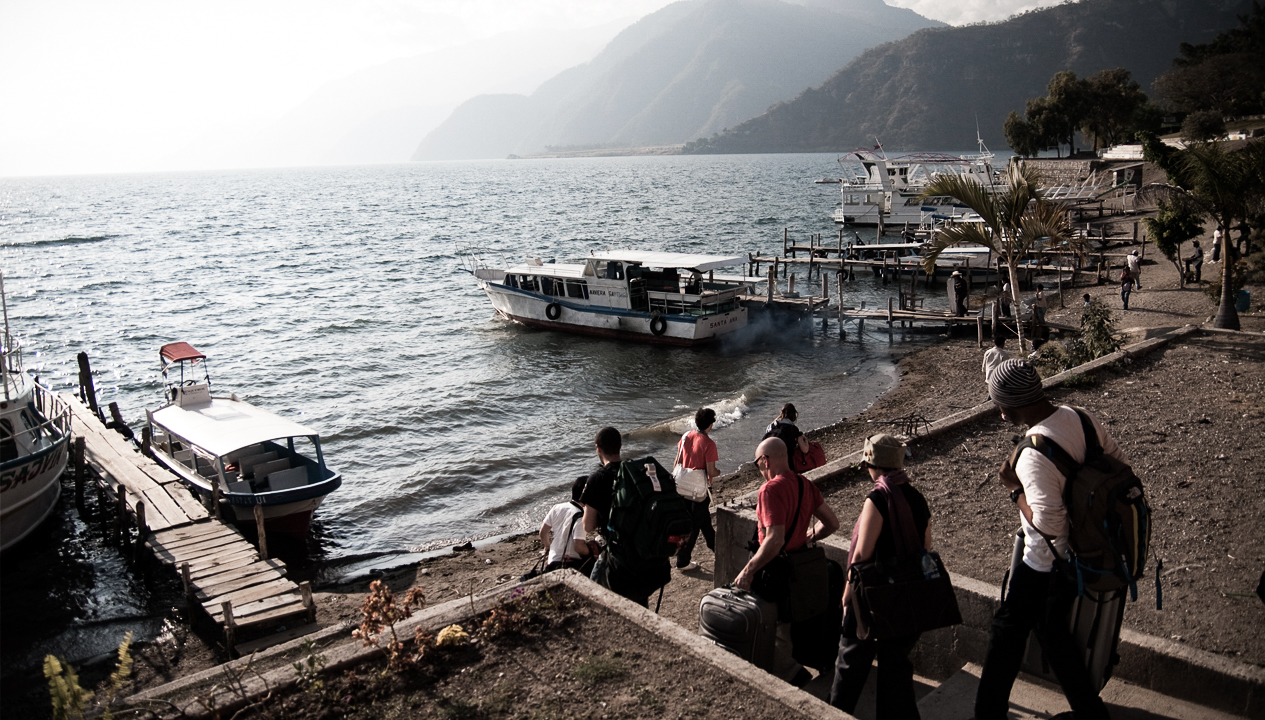Tradition still holds sway over the contemporary mores and every-day logic of the western world in the diverse villages that make up the Lake Atitlán watershed in Guatemala.
“We all have the power to go and see and feel and share what we felt. When we do this we often say we’ve been moved. Taken literally that implies starting in one place and ending up in another. It is the basis for all social change.”
Bill Shore, Founder, “Share our Strength.”
 It’s been roughly three weeks since our return from a week of field-research visits with the team of students and faculty of the current “Creating Social Value through Design” class, our first Designmatters project funded by the National Collegiate Inventors and Innovators Alliance (NCIIA), a remarkable foundation that rewards social innovation and entrepreneurship efforts amongst a highly regarded cadre of academic institutions in the country.
It’s been roughly three weeks since our return from a week of field-research visits with the team of students and faculty of the current “Creating Social Value through Design” class, our first Designmatters project funded by the National Collegiate Inventors and Innovators Alliance (NCIIA), a remarkable foundation that rewards social innovation and entrepreneurship efforts amongst a highly regarded cadre of academic institutions in the country.
Inspired by “Product Design for the Developing World”, a course led by our colleague Dr. Ken Pickar from the Mechanical Engineering Department at the California Institute of Technology in which students from Art Center and Rafael Landívar University have been participating for the past five years; this is the first true opportunity we have to bring that cross-disciplinary expertise into the studio setting of the Department of Product Design at Art Center with a project that is firmly anchored in a human-centered approach to design thinking with the leadership of principal Investigator Steve Montgomery (Graduate Industrial Design Faculty) and Liliana Becerra (Product Design Faculty), as well as teaching assistants Radhika Bhalla (Graduate Industrial Design) and Dice Yamaguchi (Product Design alumnus) and a series of expert advisors including Tony Luna, Guatemalan Anthropologist Luz Marina Delgado, and USC Marshall School of Business Adlai Wertman.
 Following the Designmatters mandate, our ambition is to frame this educational experience with meaningful and participatory engagement at the local level, and in addition to our continuing the collaboration with the Landívar students of Ovidio Morales, we are privileged to have partnered with the community development organization Asociación Ati’t Ala‘ in San Juan La Laguna, and their impressive Executive Director Mónica Berger, to seek opportunities for breakthrough change on several interrelated fronts. Two key areas of investigation and ideation of the student work will address questions about product diversification and access to expanded markets for the local population (95% Mayan, predominantly Tz’utujil and Kaqchickel) whose spinning of cotton and weaving techniques can hark back to that of their millennial ancestors….Another important direction is to contribute strategy, branding and communication for the nascent “Atitlán Azul,” certification initiative, which addresses the environmental breakdown and dangerous bloom of cyanobacteria that is threatening the lake and the livelihood of its people. For a detailed account check out the Time Magazine article.
Following the Designmatters mandate, our ambition is to frame this educational experience with meaningful and participatory engagement at the local level, and in addition to our continuing the collaboration with the Landívar students of Ovidio Morales, we are privileged to have partnered with the community development organization Asociación Ati’t Ala‘ in San Juan La Laguna, and their impressive Executive Director Mónica Berger, to seek opportunities for breakthrough change on several interrelated fronts. Two key areas of investigation and ideation of the student work will address questions about product diversification and access to expanded markets for the local population (95% Mayan, predominantly Tz’utujil and Kaqchickel) whose spinning of cotton and weaving techniques can hark back to that of their millennial ancestors….Another important direction is to contribute strategy, branding and communication for the nascent “Atitlán Azul,” certification initiative, which addresses the environmental breakdown and dangerous bloom of cyanobacteria that is threatening the lake and the livelihood of its people. For a detailed account check out the Time Magazine article.
I have so treasured my time in Guatemala with the students—this is such a committed team. As I write this, ideation is going full force ahead in the class. So is the process of innovation firmly underway: through that intrinsically optimistic design process that allows us to see and imagine the world not as it is, but as it could be—for the better.


